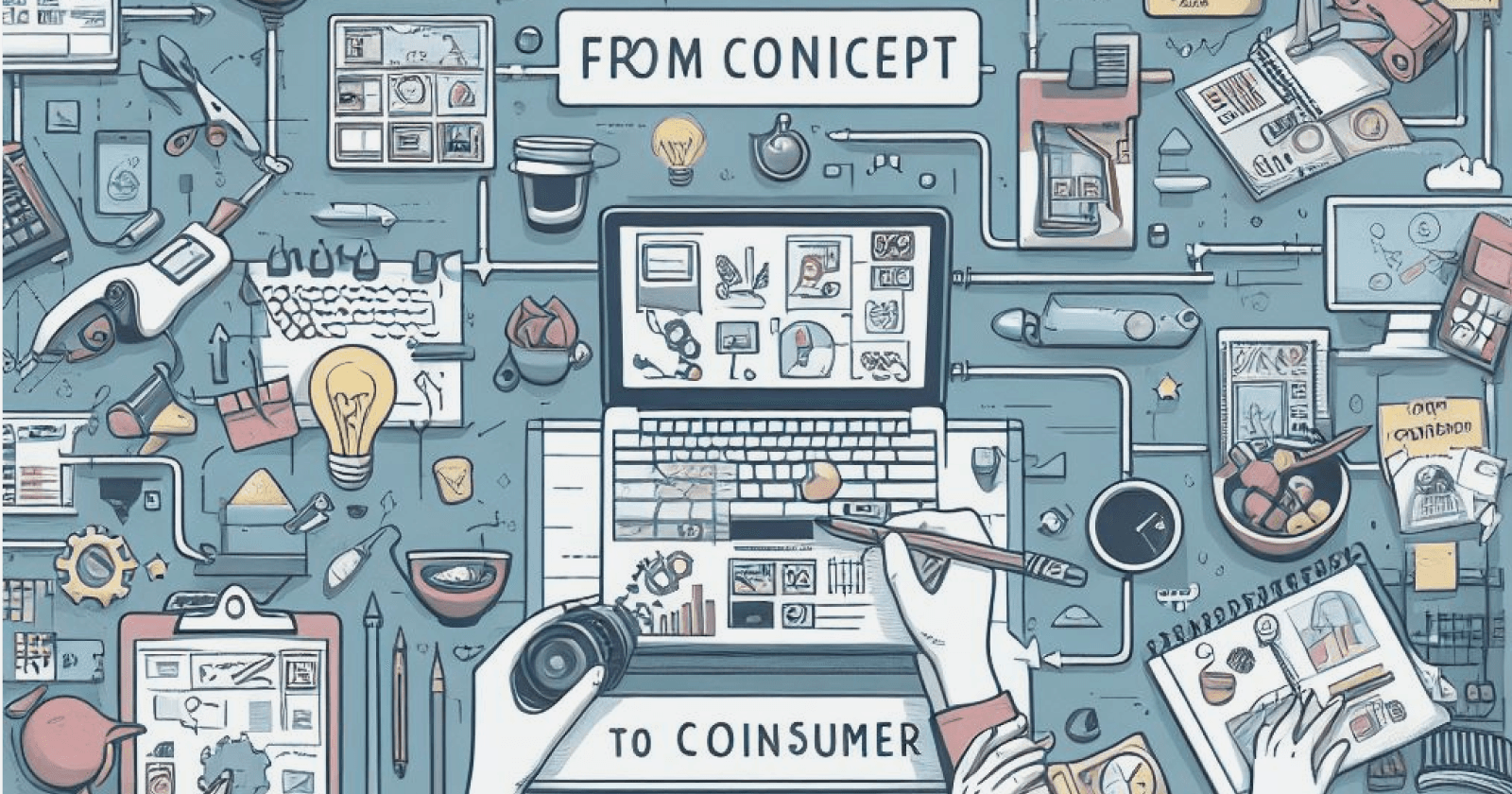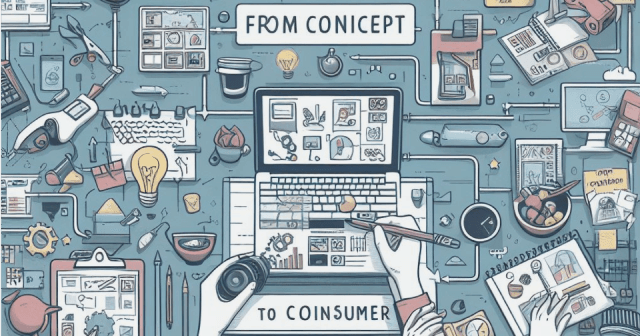

From Concept to Consumer: The Journey of Product Development
From Concept to Consumer: The Journey of Product Development
Product development is a complex and dynamic process that transforms an idea into a tangible product that meets the needs and desires of consumers. It involves a series of stages, from conceptualization to production, that require careful planning, collaboration, and innovation. This article explores the intricate journey of product development, highlighting its importance and the key steps involved in bringing a product to market.
Product development is a complex and dynamic process that transforms an idea into a tangible product that meets the needs and desires of consumers. It involves a series of stages, from conceptualization to production, that require careful planning, collaboration, and innovation. This article explores the intricate journey of product development, highlighting its importance and the key steps involved in bringing a product to market.
Understanding Product Development: Product development encompasses the entire lifecycle of a product, from its inception to its eventual launch and beyond. It involves a multidisciplinary approach, combining design, engineering, marketing, and manufacturing expertise. The primary goal of product development is to create innovative and marketable products that solve consumer problems, enhance their lives, and generate business growth.
Understanding Product Development: Product development encompasses the entire lifecycle of a product, from its inception to its eventual launch and beyond. It involves a multidisciplinary approach, combining design, engineering, marketing, and manufacturing expertise. The primary goal of product development is to create innovative and marketable products that solve consumer problems, enhance their lives, and generate business growth.
The Stages of Product Development: 1. Conceptualization: The first stage of product development involves generating ideas, conducting market research, and identifying consumer needs. This phase sets the foundation for the entire process and requires brainstorming, feasibility analysis, and the formulation of a clear product vision.
The Stages of Product Development: 1. Conceptualization: The first stage of product development involves generating ideas, conducting market research, and identifying consumer needs. This phase sets the foundation for the entire process and requires brainstorming, feasibility analysis, and the formulation of a clear product vision.
2. Design and Prototyping: Once the concept is defined, the next step is to translate it into a tangible design. This stage involves creating detailed product specifications, engineering drawings, and virtual or physical prototypes. Prototyping allows for testing, refinement, and validation of the design, ensuring that it meets functional and aesthetic requirements. To see examples of mechanical engineering projects from scratch, visit https://udtech.co/cases.
2. Design and Prototyping: Once the concept is defined, the next step is to translate it into a tangible design. This stage involves creating detailed product specifications, engineering drawings, and virtual or physical prototypes. Prototyping allows for testing, refinement, and validation of the design, ensuring that it meets functional and aesthetic requirements. To see examples of mechanical engineering projects from scratch, visit https://udtech.co/cases.
3. Testing and Validation: After the prototypes are developed, rigorous testing and validation are carried out to ensure the product meets quality standards and user expectations. This stage involves conducting various tests, such as functionality, durability, safety, and user experience testing. Feedback from users and stakeholders is gathered to iterate and improve the design further.
3. Testing and Validation: After the prototypes are developed, rigorous testing and validation are carried out to ensure the product meets quality standards and user expectations. This stage involves conducting various tests, such as functionality, durability, safety, and user experience testing. Feedback from users and stakeholders is gathered to iterate and improve the design further.
4. Manufacturing: Once the design is finalized and validated, the product moves into the manufacturing phase. This stage involves selecting the appropriate manufacturing processes, sourcing materials, and setting up production lines. Efficient manufacturing practices, such as lean manufacturing and automation, are implemented to optimize production and minimize costs.
4. Manufacturing: Once the design is finalized and validated, the product moves into the manufacturing phase. This stage involves selecting the appropriate manufacturing processes, sourcing materials, and setting up production lines. Efficient manufacturing practices, such as lean manufacturing and automation, are implemented to optimize production and minimize costs.
5. Marketing and Launch: As the product nears completion, marketing strategies are developed to create awareness and generate demand. This includes branding, packaging design, pricing, and marketing campaigns. The product is then launched, and distribution channels are established to reach the target market effectively.
5. Marketing and Launch: As the product nears completion, marketing strategies are developed to create awareness and generate demand. This includes branding, packaging design, pricing, and marketing campaigns. The product is then launched, and distribution channels are established to reach the target market effectively.
6. Post-Launch Evaluation: After the product is launched, its performance is continuously monitored, and customer feedback is collected. This feedback is used to identify areas for improvement, address any issues, and plan for future product iterations or enhancements. Regular updates, maintenance, and customer support are provided to ensure customer satisfaction and loyalty.
6. Post-Launch Evaluation: After the product is launched, its performance is continuously monitored, and customer feedback is collected. This feedback is used to identify areas for improvement, address any issues, and plan for future product iterations or enhancements. Regular updates, maintenance, and customer support are provided to ensure customer satisfaction and loyalty.
The Importance of Product Development: Product development is crucial for businesses to stay competitive and meet evolving consumer expectations. It enables companies to create innovative solutions, differentiate themselves in the market, and build brand loyalty. Effective product development processes also help minimize risks, reduce time-to-market, and optimize resource allocation.
The Importance of Product Development: Product development is crucial for businesses to stay competitive and meet evolving consumer expectations. It enables companies to create innovative solutions, differentiate themselves in the market, and build brand loyalty. Effective product development processes also help minimize risks, reduce time-to-market, and optimize resource allocation.
The journey of product development is an intricate and collaborative process that requires careful planning, creativity, and attention to detail. From concept to consumer, every stage plays a vital role in creating successful products that resonate with customers. By understanding and embracing the product development process, businesses can drive innovation, deliver value, and thrive in today's dynamic marketplace. To gain a deeper understanding of the product development process, read the article.
The journey of product development is an intricate and collaborative process that requires careful planning, creativity, and attention to detail. From concept to consumer, every stage plays a vital role in creating successful products that resonate with customers. By understanding and embracing the product development process, businesses can drive innovation, deliver value, and thrive in today's dynamic marketplace. To gain a deeper understanding of the product development process, read the article.